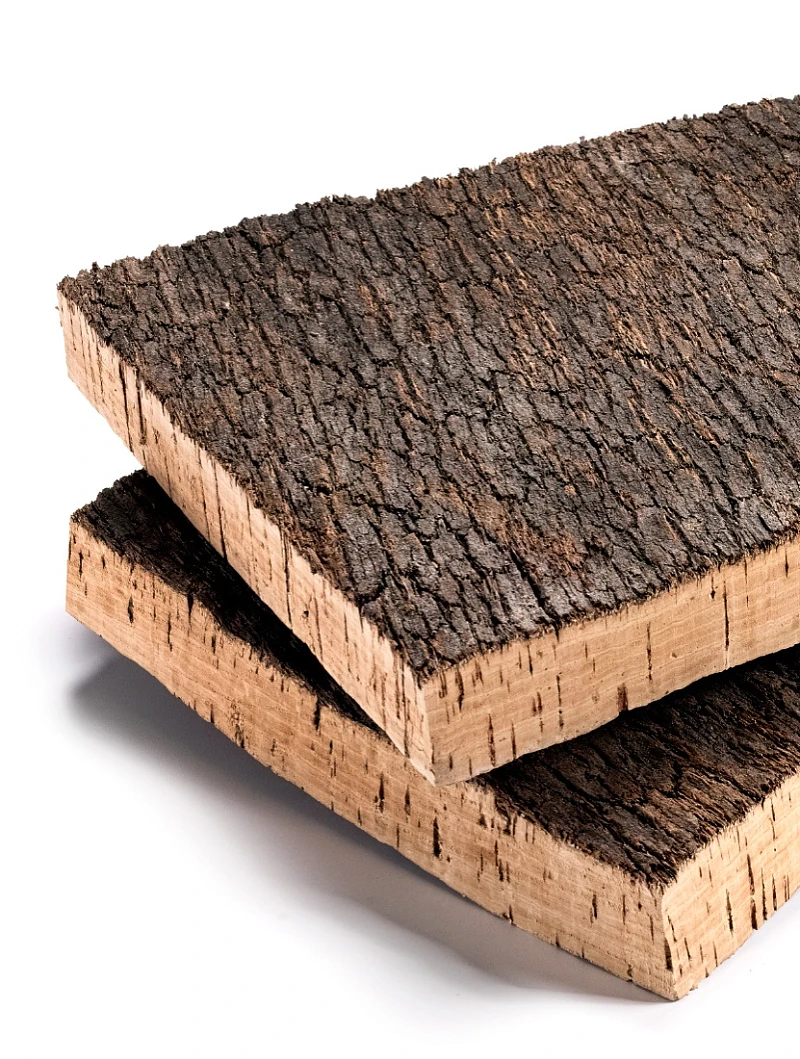Cork is a natural, renewable, and ecological material obtained from the bark of the cork oak. It stands out for its lightness, flexibility, water resistance, and insulating properties. In the field of commercial signage and decoration, cork has become an increasingly popular option, especially in projects that seek to convey a sustainable, warm, and handcrafted image.
In addition to its unique aesthetic, cork offers multiple customization possibilities. It can be cut, carved, painted, engraved, or combined with other materials such as wood, vinyl, or metal, making it ideal for creative, decorative, and functional signage.
Types of cork used in signage
1. Pressed cork

It is the most widely used material in signage. It consists of cork particles bonded together by heat and pressure, forming rigid, uniform sheets. It can be machined with a milling machine or laser, and is perfect for three-dimensional letters, decorative panels, or embossed signage.
2. Natural cork

It comes in sheets or blocks with a more organized and irregular texture. It's ideal for projects seeking a rustic, natural, or artisanal aesthetic. It can be combined with warm lighting to achieve a very attractive visual effect.
3. Expanded cork
It's a darker, denser type of cork, with greater thermal and acoustic resistance. It's used to a lesser extent in signage, but can be used as a base or structural support in more complex installations.
Frequently asked questions about cork in signage
Is cork resistant for outdoor use?
Cork can be used outdoors if properly protected with varnish, lacquer, or resins. Untreated, it's best used indoors, as it can degrade with prolonged exposure to sun and rain.
Can cork be painted or vinyl coated?
Yes. Cork is paintable, stainable, and varnishable. Vinyl can also be applied over smooth pressed cork surfaces. For a more detailed finish, a primer is recommended.
What thickness is recommended for three-dimensional letters ?
Between 10 and 30 mm, depending on the design size and the desired visual effect. Cork is lightweight even at large thicknesses, making it easy to install.
Is it an eco-friendly material?
Yes. Cork is 100% natural, biodegradable, and its extraction does not harm the tree. It also has a very low carbon footprint and is completely recyclable.
Conclusion
Cork is an original, sustainable, and very economical option for signage projects. Whether in the form of three-dimensional letters, decorative signage, or creative panels, it adds texture, warmth, and personality to a space. It's ideal for brands seeking to convey values of sustainability, closeness, and natural design.
Use of cork in Neon 51
At Neón 51, we use pressed and natural cork to create unique signs, primarily cork lettering , especially for shop interiors, eco-friendly offices, and events such as weddings. We can create cork lettering, engraved panels, or custom signage, combining cork with other materials to achieve a professional and original finish.

Do you want a sign that speaks of environmental commitment and natural design? Write to us and we'll help you bring your idea to life with high-quality cork.
Author: Pablo del Pino - Financial and Production Manager at Neon 51.
Pablo holds a bilingual degree in Economics and Finance and has been heading the finance and production department for three years. This combination allows him to fully understand how to efficiently and easily manufacture all types of neon signs and signs for our clients.


